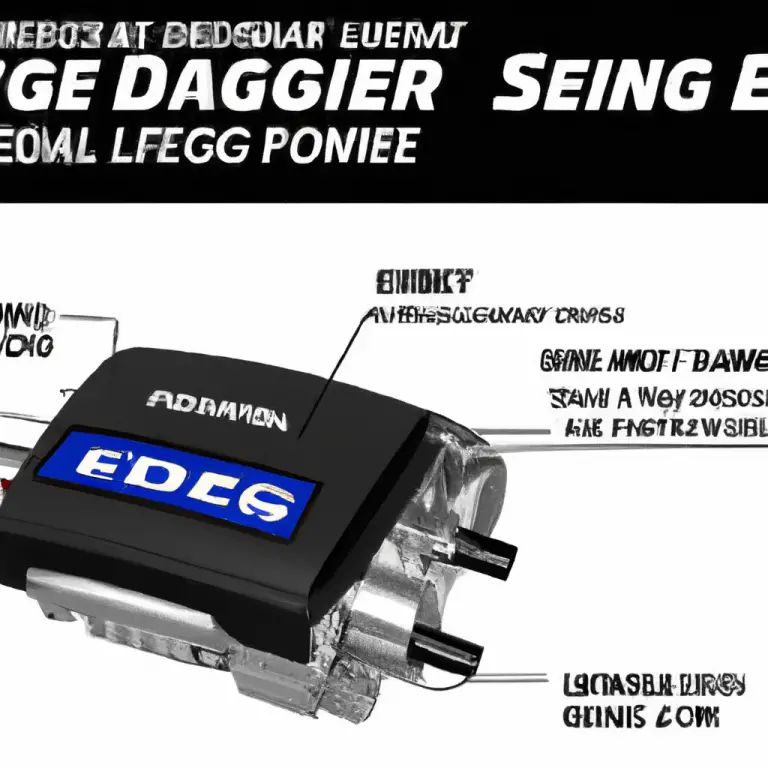Ford F150 Computer Module Location
Last Updated on by David Jon
In the intricate web of the Ford F150’s engineering, one key component, not readily visible to the untrained eye, is the Computer Module. As avid enthusiasts of Ford maintenance, DIY fans, and professional mechanics, you understand the importance of this unassuming yet significant piece. Harnessing its potential could significantly enhance the performance of your vehicle, making it quintessential to acknowledge its precise location. In the forthcoming discourse, you’ll find a detailed guide providing insights into the Ford F150’s Computer Module Location.

Understanding the Ford F150 Computer Module
Definition of the computer module
In simple terms, the computer module in a Ford F150, also known as Engine Control Unit (ECU), is akin to the vehicle’s brain. It is an electronic component that manages and oversees the majority of the vehicle’s systems and functions. From managing the engine’s output to optimizing fuel consumption and regulating emissions, the computer module is crucial for the smooth operation of the vehicle.
Components and functionality of the computer module
The computer module is a complex piece of hardware composed of several components including microprocessors, memory units, and input/output interfaces along with the necessary software. It continuously monitors and manages various vehicle parameters such as engine speed, temperature, load, and exhaust gas composition. It collects data from an array of sensors around the vehicle, interprets them, and makes necessary adjustments to ensure optimal vehicle performance.
Role and importance of the computer module in Ford F150
The role of the computer module in a Ford F150 is pivotal. By constantly monitoring and managing all the key functions of a vehicle, the computer module maintains the vehicle’s optimal performance, improves fuel efficiency, and ensures the vehicle adheres to emission standards. Without the computer module, the vehicle runs inefficiently, leading to heavy fuel consumption, poor driveability, and increased harmful emissions.
General Location of the Ford F150 Computer Module
Standard location for most Ford F150 models
In most Ford F150 models, the computer module is commonly located behind the kick panel on the passenger side. The kick panel is the part of the vehicle that’s beneath the dashboard and flares outwards towards where a front-seat passenger would place their feet.
Exceptions and variations in different models
While this is generally its location, there are exceptions based on the model and the year of the vehicle. In some variants, it might be located under the hood, closer to the vehicle’s engine, or it might be positioned behind the glove box compartment.
Why the computer module is positioned there
The location of the computer module, beneath the kick panel or behind the glove box, is strategically chosen primarily for three reasons. Firstly protection – these areas are less prone to impacts or damage in accidents. Secondly, convenience – these are accessible areas for service technicians. Lastly, heat management – these areas provide an environment where the heat dissipation is moderate.
Identifying the Ford F150 Computer Module
Physical characteristics of the computer module
The computer module typically is a rectangular metal box with fins for heat dissipation and features several types of plug-in connections. It may also bear a label or identification marking that can range from “ECU” to the Ford-part number.
Tips on correctly identifying the computer module
It is crucial to refer to the user manual or repair guide specific to your vehicle’s model and year. This can prevent any misinterpretations. Typically, the computer module would be the only component behind the kick panel or glove box feature multiple plug-in connections.
Common mistakes to avoid when locating the module
One common mistake is confusing the computer module with other modules in your vehicle. The Ford F150 has several modules such as Airbag Module, Transmission Control Module and they may look similar. Second common mistake is forcing parts out while trying to locate the module. Gentle hand is the key to avoid any damage.

Step-by-Step Guide to Finding the Ford F150 Computer Module
Tools necessary for locating the computer module
Standard automotive hand tools are usually sufficient to locate the computer module, including a flashlight for better visibility, socket set and screwdriver set, particularly Phillips head, and flathead screwdrivers.
Precautions to observe while locating the module
Before beginning, ensure the vehicle is safely parked with the engine off. Make sure to disconnect the vehicle’s battery to avoid any electrical mishaps. It’s also crucial to handle the vehicle’s interior parts with utmost care to avoid damages.
Detailed steps to follow
First, identify the kick panel or glove box based on your vehicle’s model and year. Use your hand tools as necessary to gently remove the panel and reveal the components behind it. Look for the distinct features of the computer module as described above to confirm its identification.
Removing the Ford F150 Computer Module
Tools necessary for removing the computer module
In addition to the tools used for locating the module, you may need a pair of needle-nose pliers and a wire cutter for removing the module.
Precautions to observe while removing the module
Before starting the process, importantly disconnect the vehicle’s battery. Handle the computer module with care as it’s a sensitive electronic device. Remember to disconnect the wiring connectors carefully to avoid any damage to their pins.
Detailed steps to follow
After locating the module, carefully unplug any connected wires or connectors. Use your tools as necessary to remove mounting bolts or screws holding the module in place. Once these are disconnected, you should be able to gently remove the module from its position.
Installing a New Ford F150 Computer Module
Where to buy a new computer module
New computer modules can be purchased directly from Ford, or from aftermarket providers. Ensure the module is compatible with your Ford F150’s make, model, and year.
How to choose a quality computer module
Look for modules from reputable suppliers, preferably OEM (Original Equipment Manufacturer) parts. Read reviews and consult with professionals if unsure of the quality or compatibility.
Installation process for the computer module
Installing the new module is essentially the reverse process of removal. Secure the module in place and carefully reconnect any wires or connectors. Reinstall any removed vehicle components.
Common Issues with the Ford F150 Computer Module
Most common problems
Common problems with the computer module include malfunctioning sensors, worn-out wiring, water or heat damage and sudden shutdowns. These issues can lead to various symptoms such as rough idling, the engine not starting, poor fuel economy, or heightened emissions.
Diagnosing computer module issues
Diagnosing computer module issues can be challenging due to their diverse symptoms. Often, professional tools and expertise are required. However, trouble codes retrieved through an OBD-II scanner can often provide clues.
How these issues affect the performance of the Ford F150
Faulty computer modules can significantly impair the performance of the vehicle, leading to decreased fuel efficiency, increased emissions, rough idling, engine misfires or even inability to start the engine.
Fixing Ford F150 Computer Module Problems
DIY fixes for common problems
Some issues with the computer module can be fixed by resetting the module— unplugging the connectors, waiting for a few minutes, and reconnecting can resolve certain problems.
When to seek professional help
While some minor issues can be handled personally, major faults in the computer module typically require professional attention. If there is consistent trouble with the module, it’s advisable to consult a mechanic or a Ford service center.
Costs associated with fixing the computer module
Computer module repair costs can vary widely. While a simple reset may be free, replacement costs can go into hundreds of dollars, depending on the specific model, part costs, and labor charges.
Preventive Maintenance for Ford F150 Computer Module
Routine checks for the computer module
Routine checks include monitoring your vehicle’s performance for any irregularities. Regular diagnostics with an OBD-II scanner can help identify any early warning signs.
How to keep the computer module in good condition
Maintaining a clean vehicle, avoiding water exposure near the computer module, and ensuring the maintenance of related vehicle components can help keep the computer module in good health.
The impact of preventive maintenance on longevity of the computer module
Preventive maintenance goes a long way in prolonging the lifespan of the computer module. Addressing minor issues before they escalate not only saves time and money but also helps maintain the overall health of the Ford F150.
Ford F150 Computer Module Location in the Context of Other Ford Models
Similarities and differences with other Ford models
Computer module placement is quite consistent across other Ford truck models, with most featuring a similar under-dash location. However, smaller Ford vehicles like sedans and coupes might have a different placement due to space constraints.
Understanding these differences, possible reasons
These variations are primarily due to design differences but the core principle remains the same— placing the computer module where it is easily accessible for servicing, adequately protected, and with sufficient heat management.
How this insight might help you in future troubleshooting
Understanding the general principles behind the computer module and its placement will greatly ease the process of locating it in other vehicles. This fundamental knowledge is helpful in maintaining, troubleshooting, and repairing not just the Ford F150, but also various other models.





